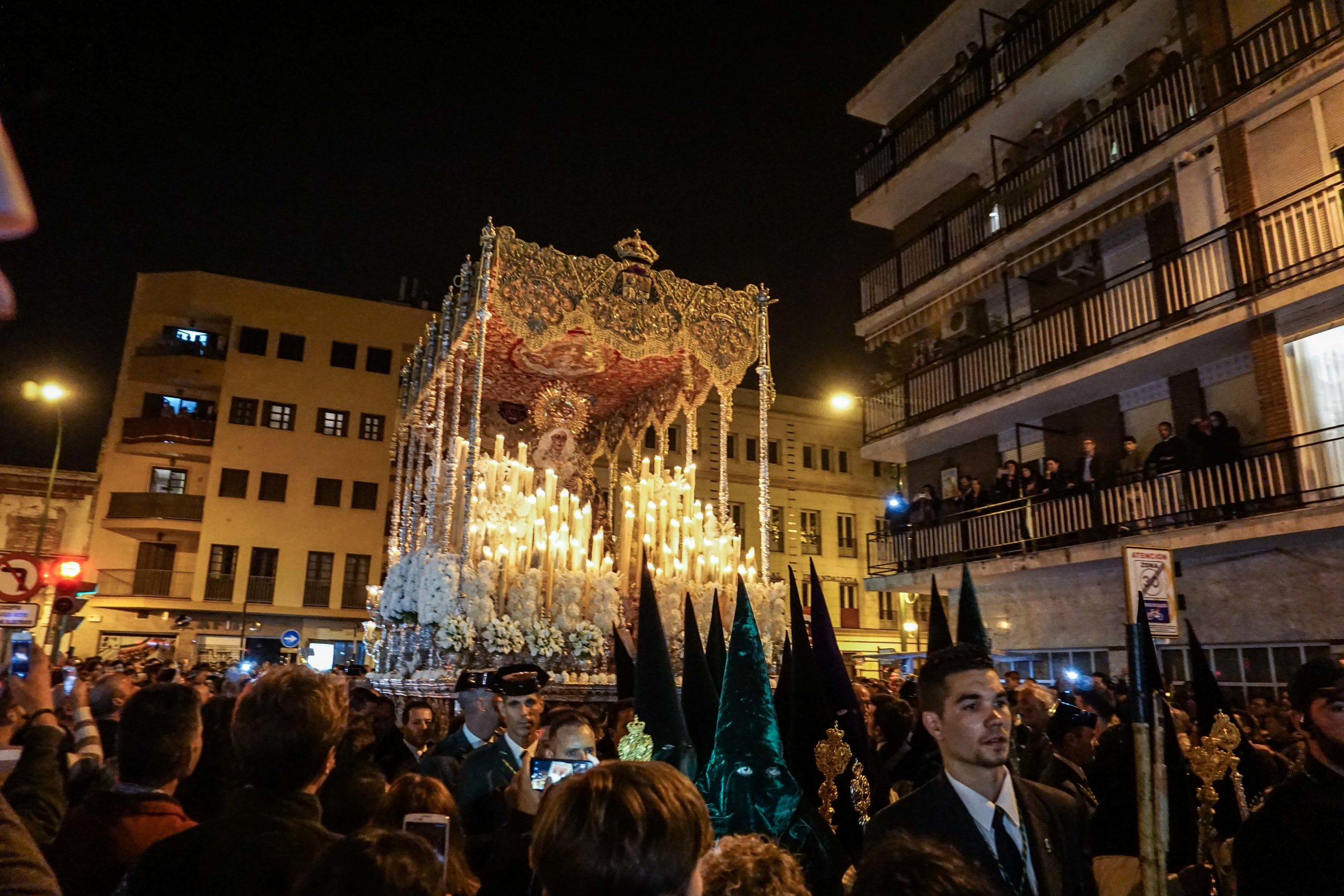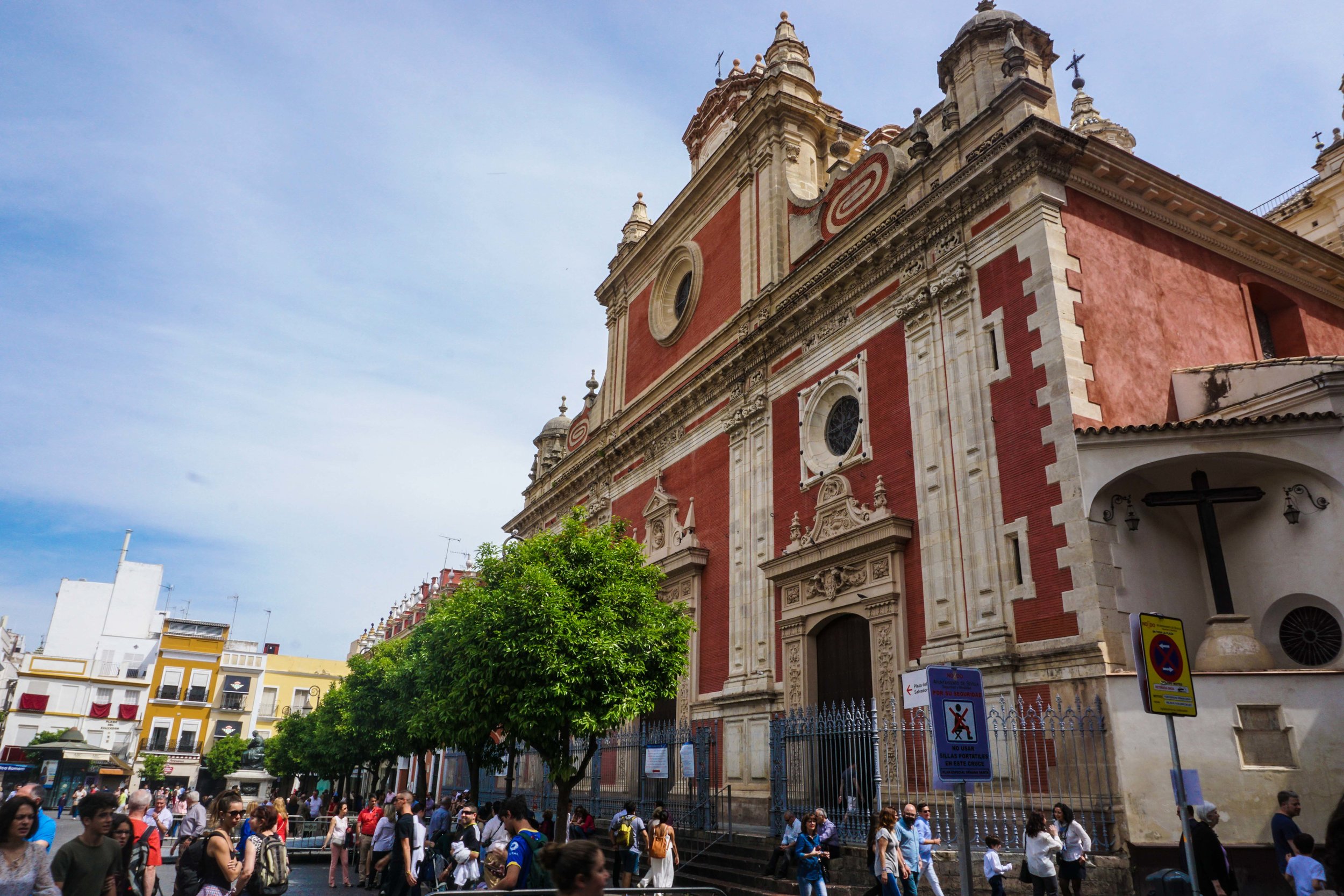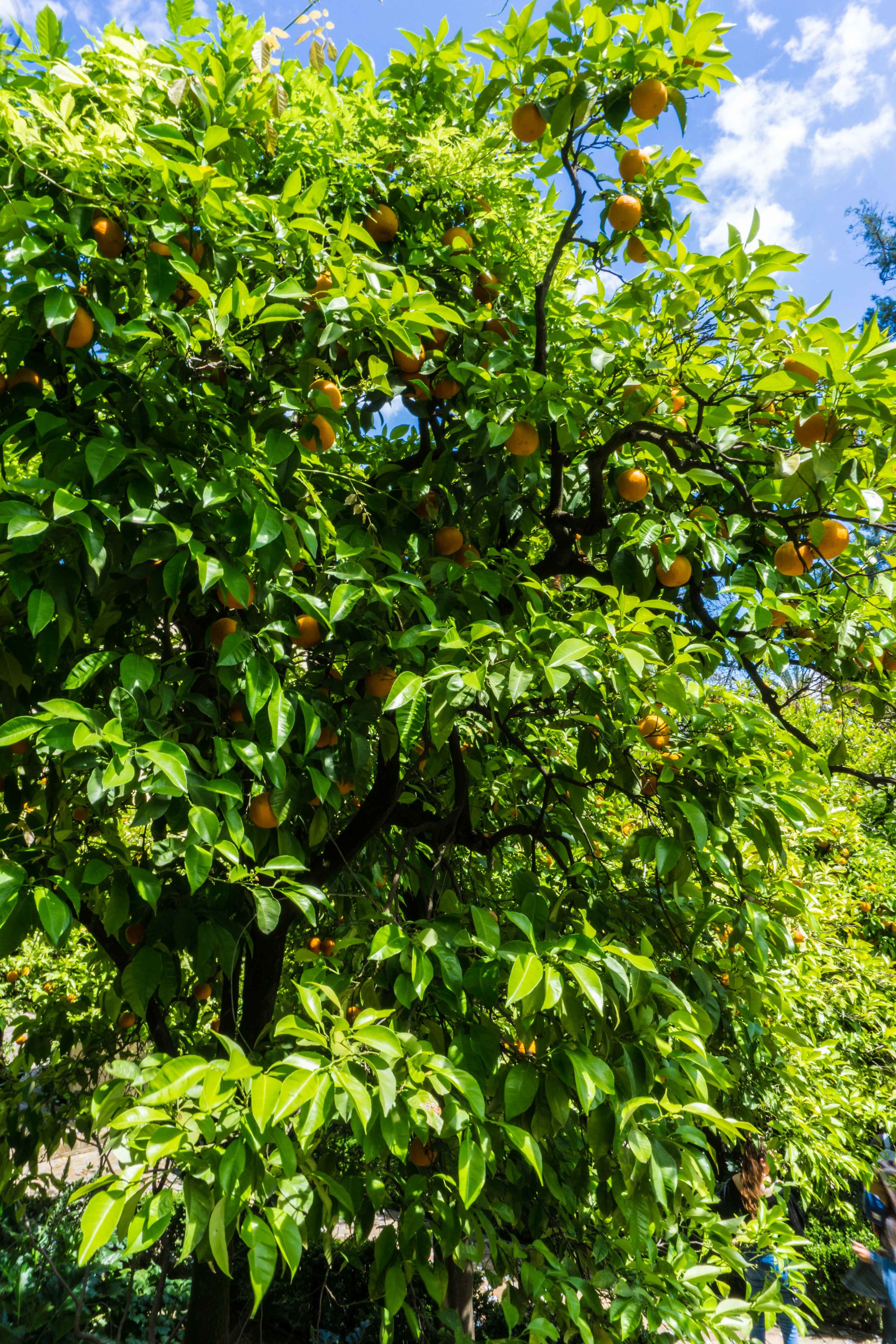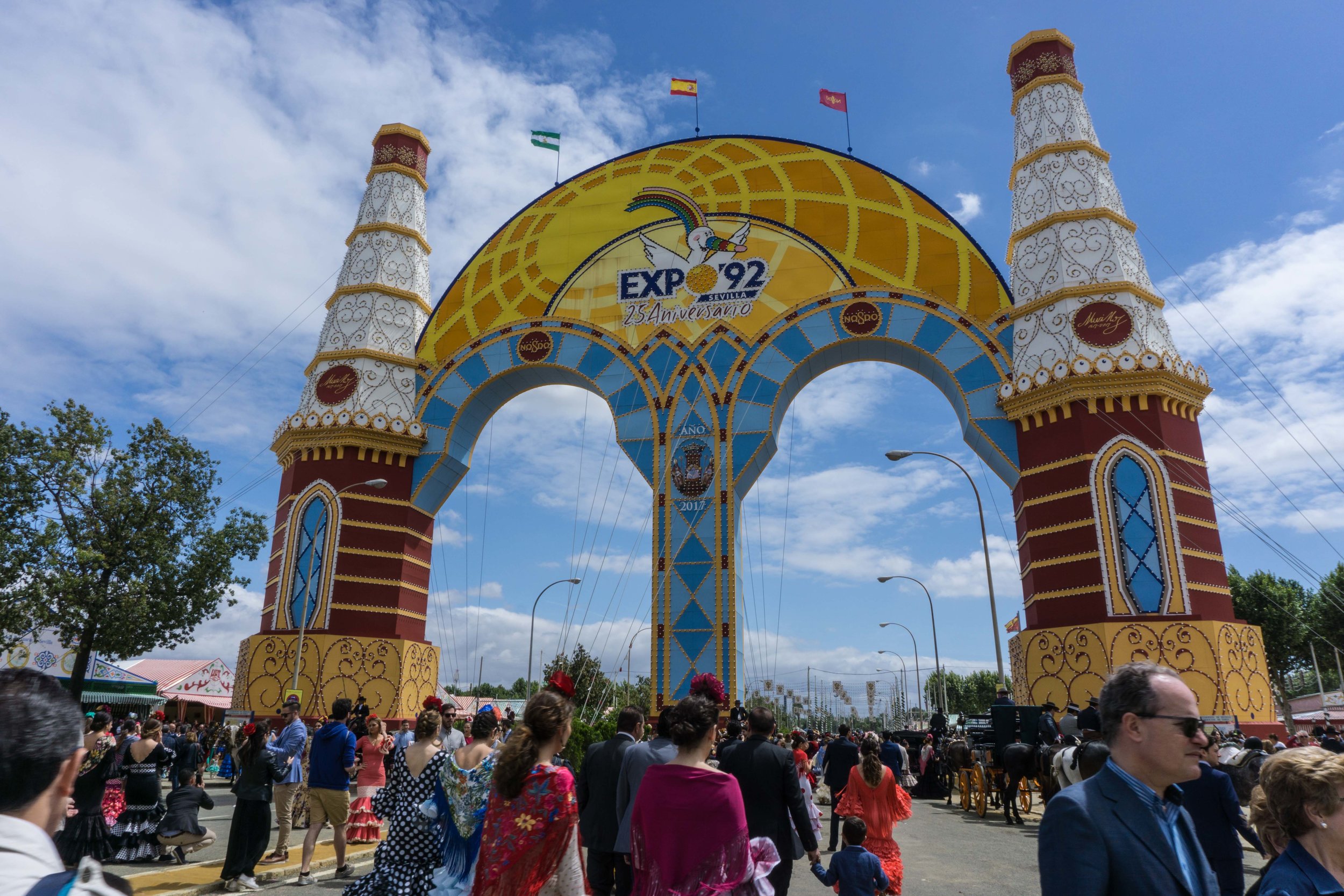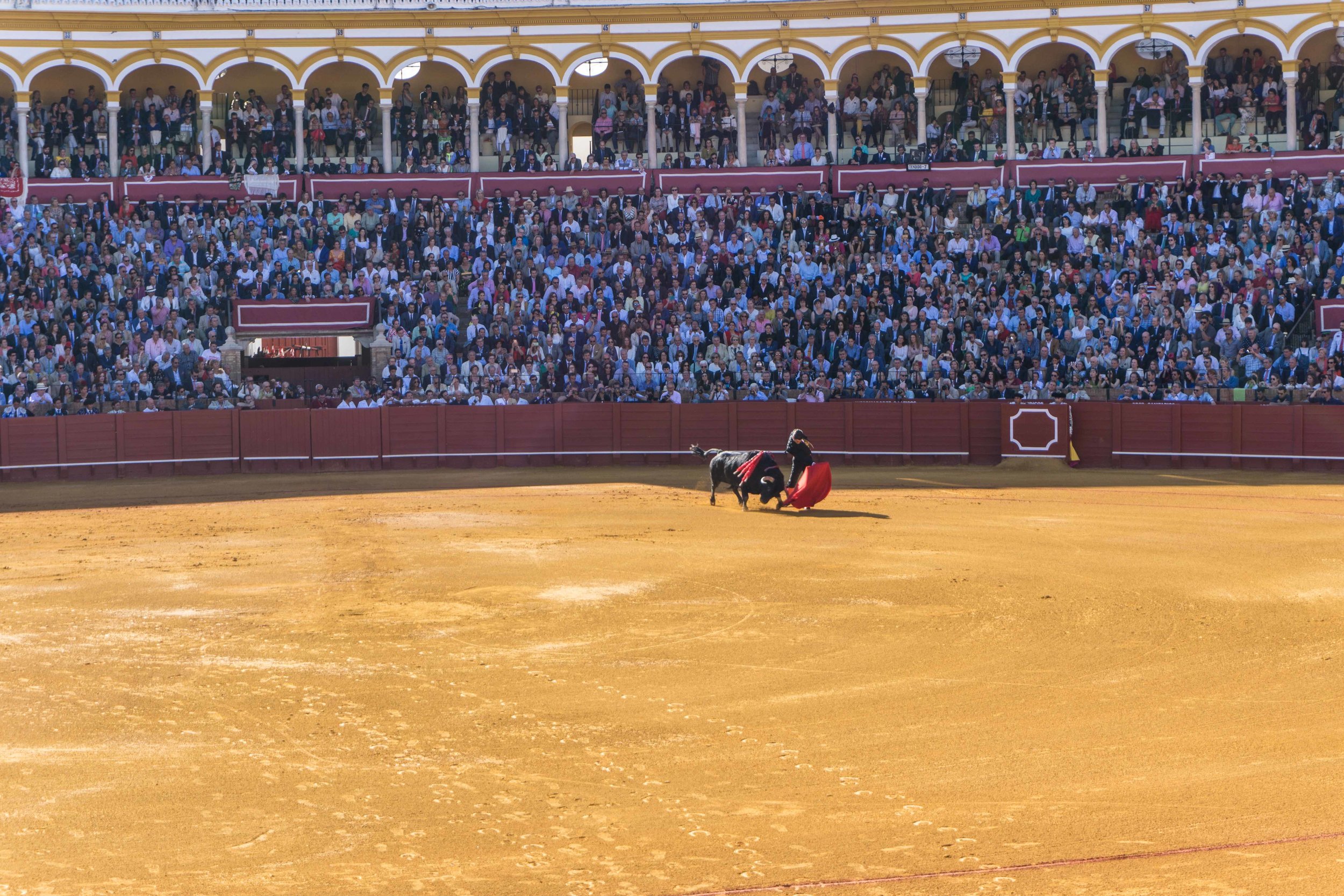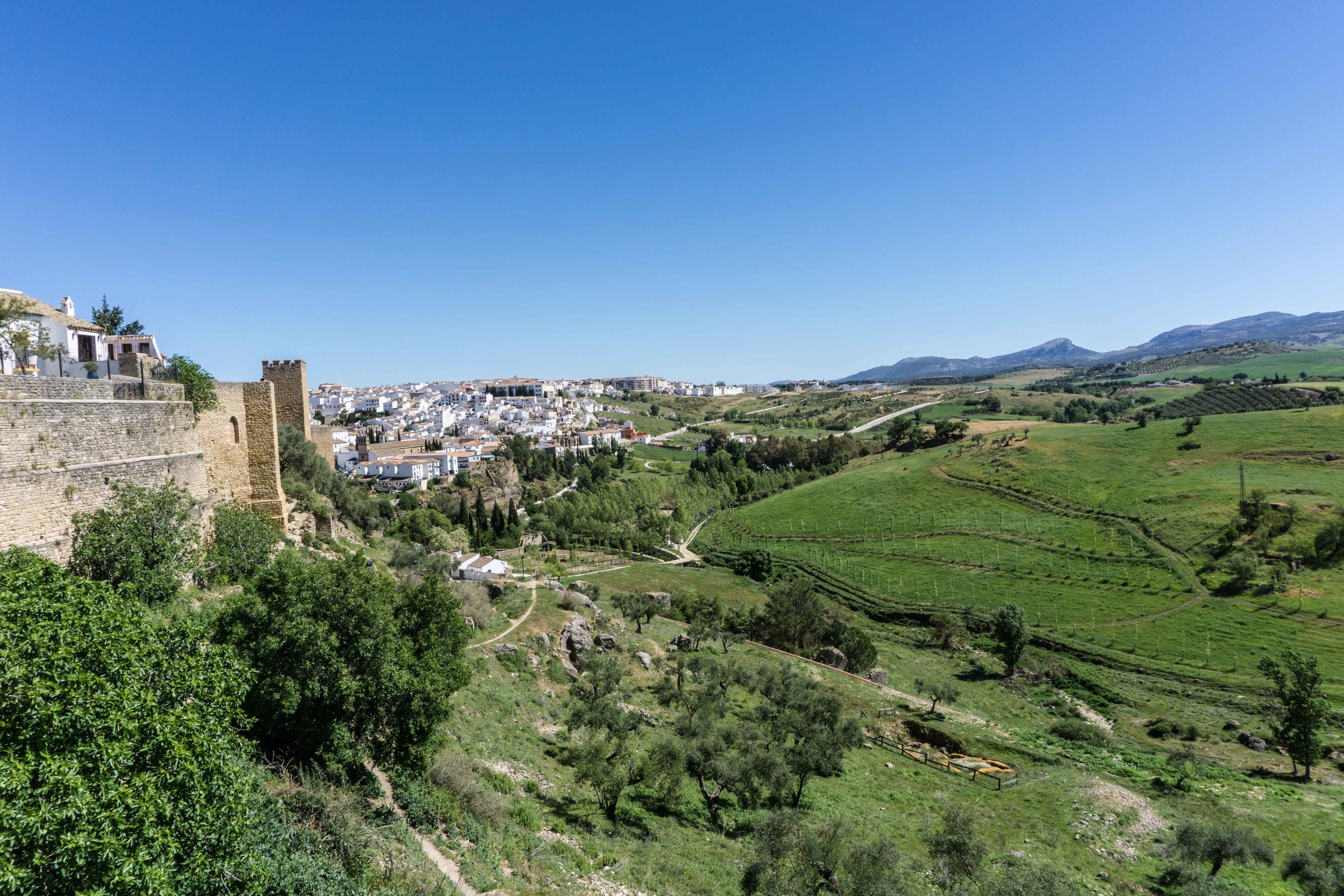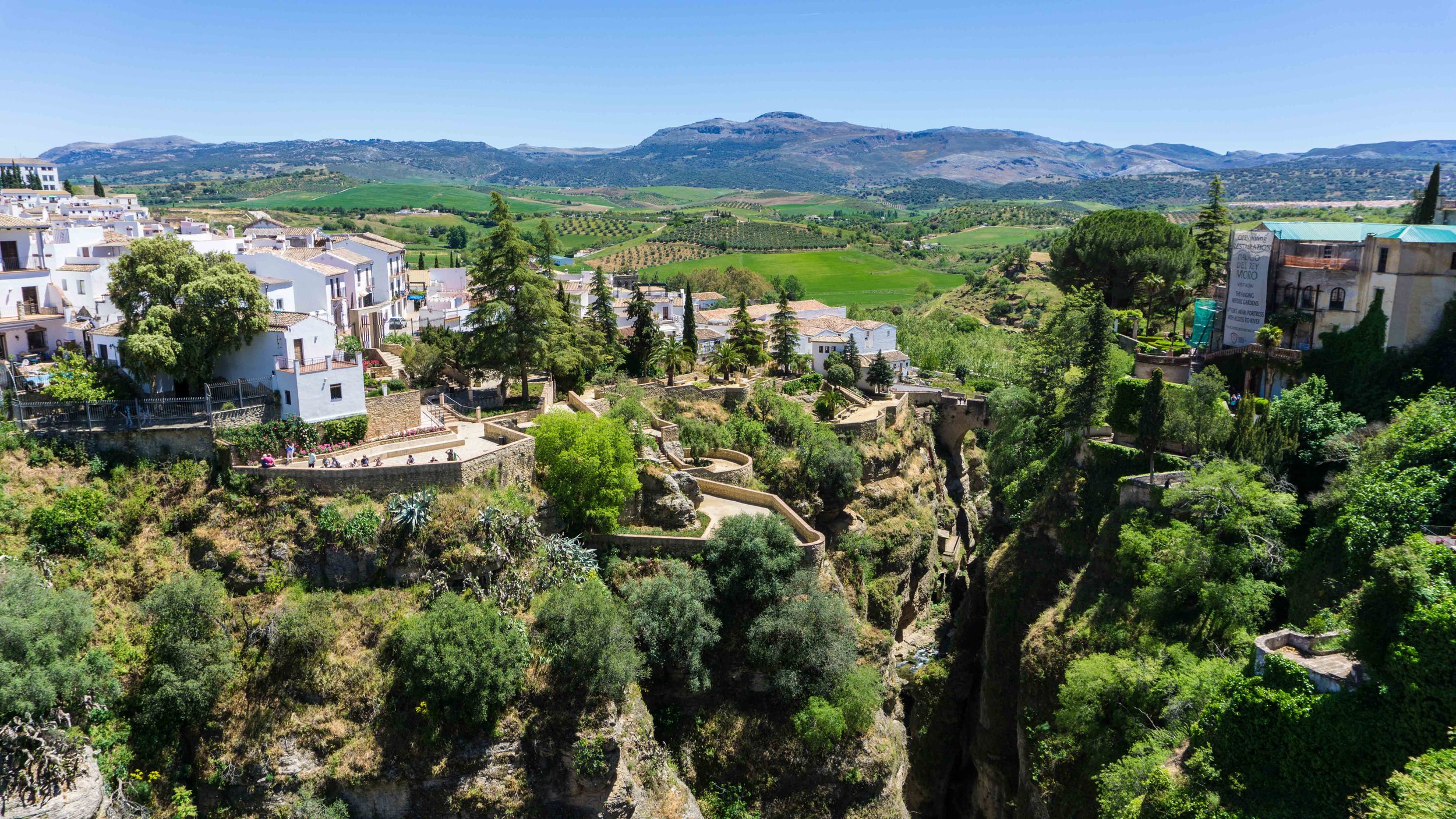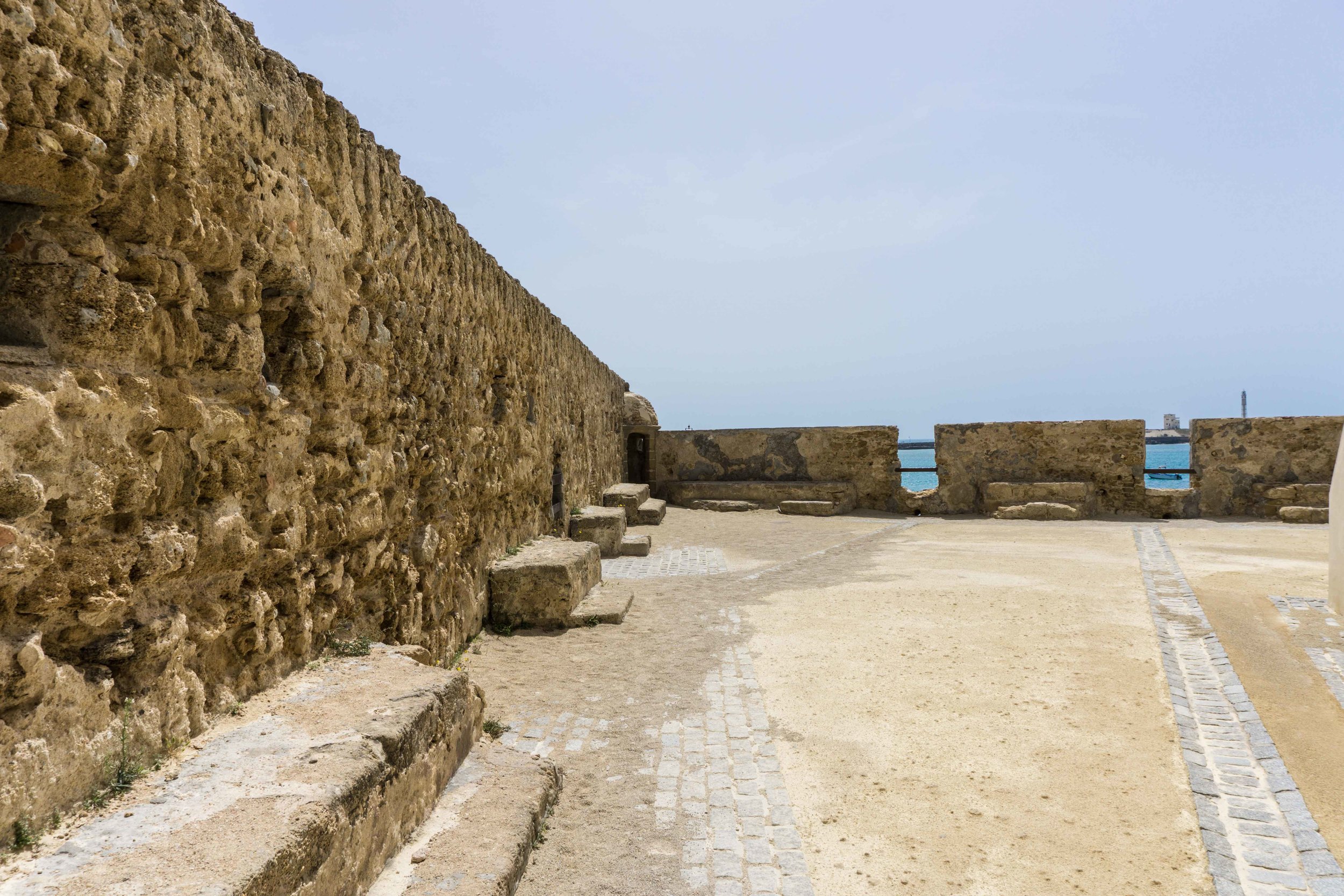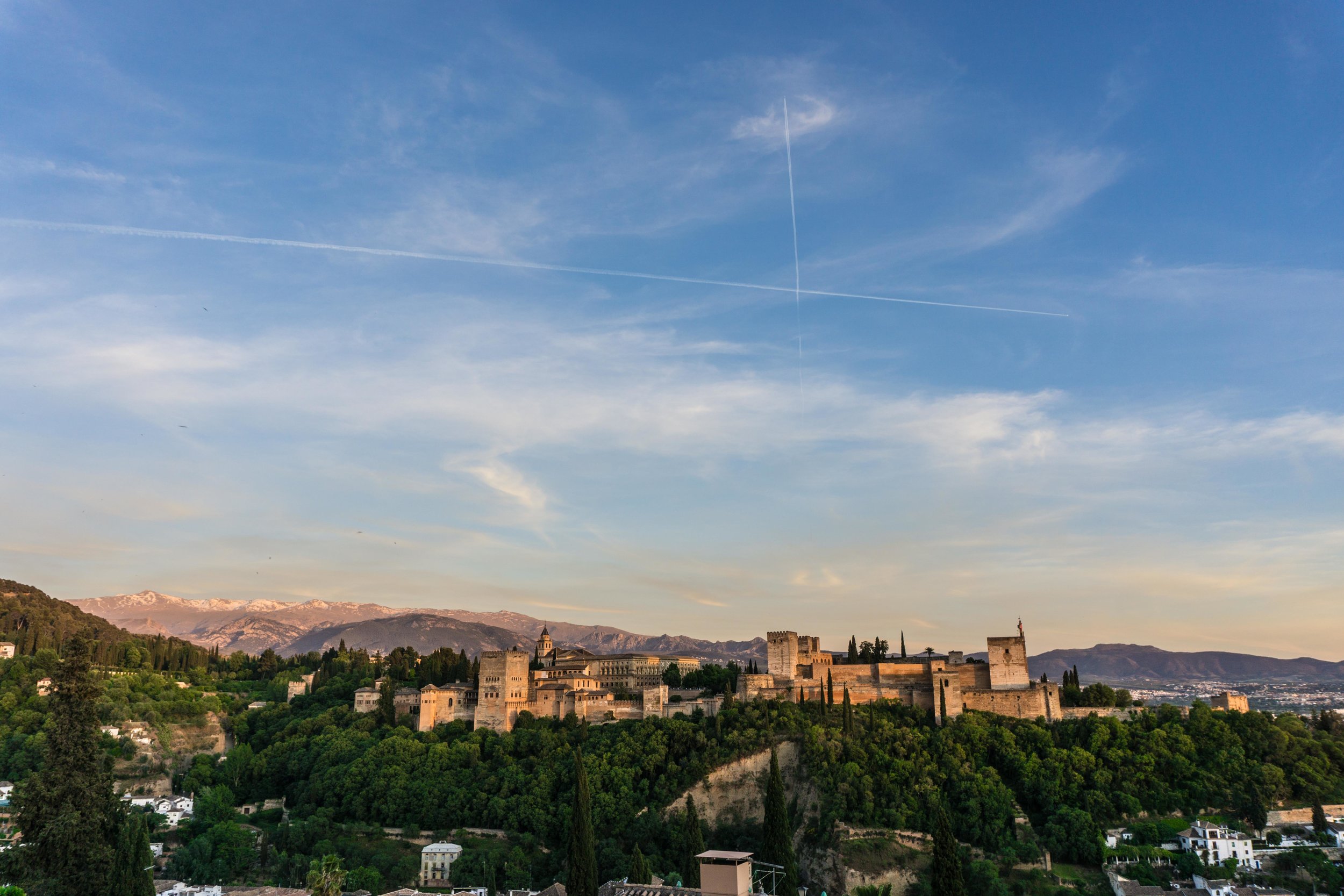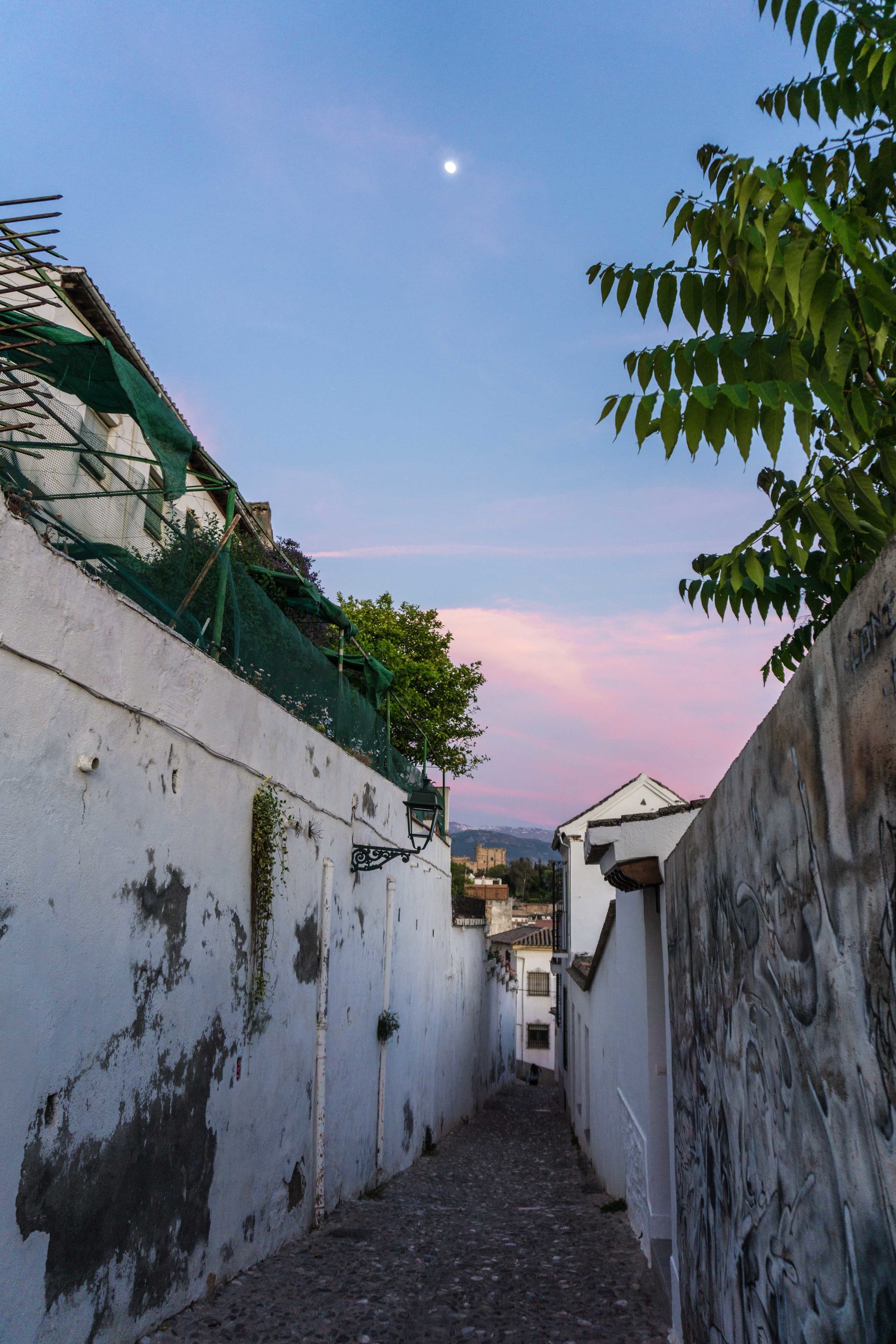Fiestas, Viajes y Buenos Tiempos
Three months in the Balkans and slowly blooming our spring petals, we were ready and waiting to jet off to Andalucía, Spain. Tapas! Wine! Jámon! Late night sun! The EU!
Amazingly, we spent our 4 weeks in Seville, Spain, bookended by the two largest festivals the city hosts in the entire year: Semana Santa (Holy Week) and la Feria de Abril. Semana Santa, the week leading up to Easter, was a fascinating display of Catholicism, celebration and community. Every day, starting around 4 in the afternoon, different churches would begin processions of pasos: huge floats depicting scenes from the story of Easter, supported on the backs of dozens of men and slowly, slooowly walked across the city. The pasos were lead by all of the hermanas of the church, either carrying crosses or a part of the band, dressed in hoods and cloaks that are a liiiiitle too close to home for us in the States. We would find ourselves wandering around the city, only to hear the telltale bang of the drum and sound of the trumpets and migrate to the crowd to watch the floats pass by. The whole city smelled of incense – it’s not a smell I’ll ever forget.
We did stay up late on Thursday night (La Madrugada), where the most popular paso, La Macarena, leaves the Basilica de la Macarena at midnight, and winds its way through tiny streets until it ends its procession at 2 in the afternoon the next day. 14 hours, people! But, oh, how the Spaniards love their Lady.
After the hubbub of Semana Santa, we explored the city with a much calmer atmosphere. I had an impromptu work trip to New York for a week, so Travis had the entire city all to himself while I was gone. (If anyone cares, NY was good!). Travis took a tour of the bull ring (more on that later), and just enjoyed walking around the city. Seville is all bright reds and yellows and greens. The architecture is fun, eye catching and arresting, in a way that only España could be.
Once I got back, we did a proper job of seeing all the main sights around the city: La Plaza de España, La Giralda, Réal Alcazar, Metropol Parasol, etc. We also went out for tapas basically every other night (they’re so cheap!) and had jámon at least once a day. Our last week was la Feria de Abril, a huge city festival were everyone gets the entire week off to eat and drink and dance. They walk around the fairgrounds in their gorgeous dresses, going in and out of casetas (tents), and there are bull fights every night.
La Feria is actually a pretty exclusive event, with the social elite riding in on carriages and horseback, and the casetas not being open to the public. It’s fun to see the dresses (oh the dresses!), but unless you know someone who can get you into a caseta, it’s more for the locals to enjoy. Although, even among the Sevillanos, it felt like a proclamation of who you know, how much money you have, how high in society you are. There are people that spend the year climbing the social ladder to be able to be invited into this caseta or that caseta. It was really revealing to see how this one festival dictates the behavior of a city.
During the Feria, we decided that we wanted to go to a bull fight. Yes, we knew what we were getting ourselves into. However, Travis had taken a tour and was fascinated by the sport (sport?), so we wanted to take part in an experience that is such an integral part of Spanish culture. It’s pretty controversial, even among the Spanish. It’s a dying sport that has little support from younger generations. We were talking with friends after, and several of the locals around our age didn’t like bull fighting, and most had never even been to one.
During a fight, six bulls die. Every time. Each matador goes out twice with his group of guys and entrance the bull for about 20 minutes, before pulling out the red cape and delivering the final blow. There was one matador who was more senior, and he was really, really good. There was one point where he kept the bull charging for 7 minutes straight, and he did not move his feet once. His final blows were clean, which is what the crowd wants. It’s the ones that take a while that show the matador isn’t doing well or isn't skilled.
In the moment, it was hard to watch but I felt fairly detached, almost like watching a movie. However, it’s something that has really resonated with me afterwards, and I still find myself thinking about it now. At the time we didn’t know this, but they tranquilize the bull before letting him into the ring – it’s not even a fair fight! I’m glad we went and saw it, but I definitely won’t go again.
We also rented a 125-CC scooter during our two remaining weeks, which was probably the smartest thing we could ever do. We wanted to get outside of just Seville and see all that Andalucía has to offer. The drives were a touch longer than they would have been in a car – imagine us puttering up a hill at 40 miles an hour, while a Ducati zooms past us at 80. Upon the recommendation of Travis’s dad and wife (who lived in Spain for years), we explored Ronda, a hilly town with a giant crevice that goes straight through the center. We also went to the beach a few times and visited Cadíz, wandering around the crystal blue waters and sandy stone fortress.
Our last weekend, we made our way to Granada. Granada is where we were originally going to start this life in Europe in the winter of 2016. As with most things, however, life got in the way. But! We finally, finally made it. And did it deliver. Granada is much different than I thought. The Moorish influence isn’t just seen through the Alhambra (which is stunning and time-traveling). You see it in the winding streets of the bazaar and the climbing cobblestone of the Albacín. Also, hello free tapas!
Andalucía, this southern area of Spain, is so quintessentially Spanish. It seems like the heart and soul of the Spanish culture. It’s crazy to think that this is the same country as Barcelona in Catalonia and Bilbao in Basque. Comparatively in Europe, it's a larger country, and the cultures vary wildly from one to another. There are still so many parts of it we have to discover.
Pero Andalucía, mi amigo, volveremos a ti.







